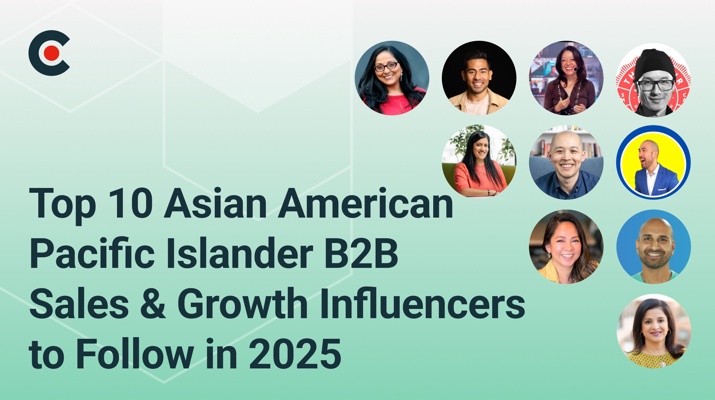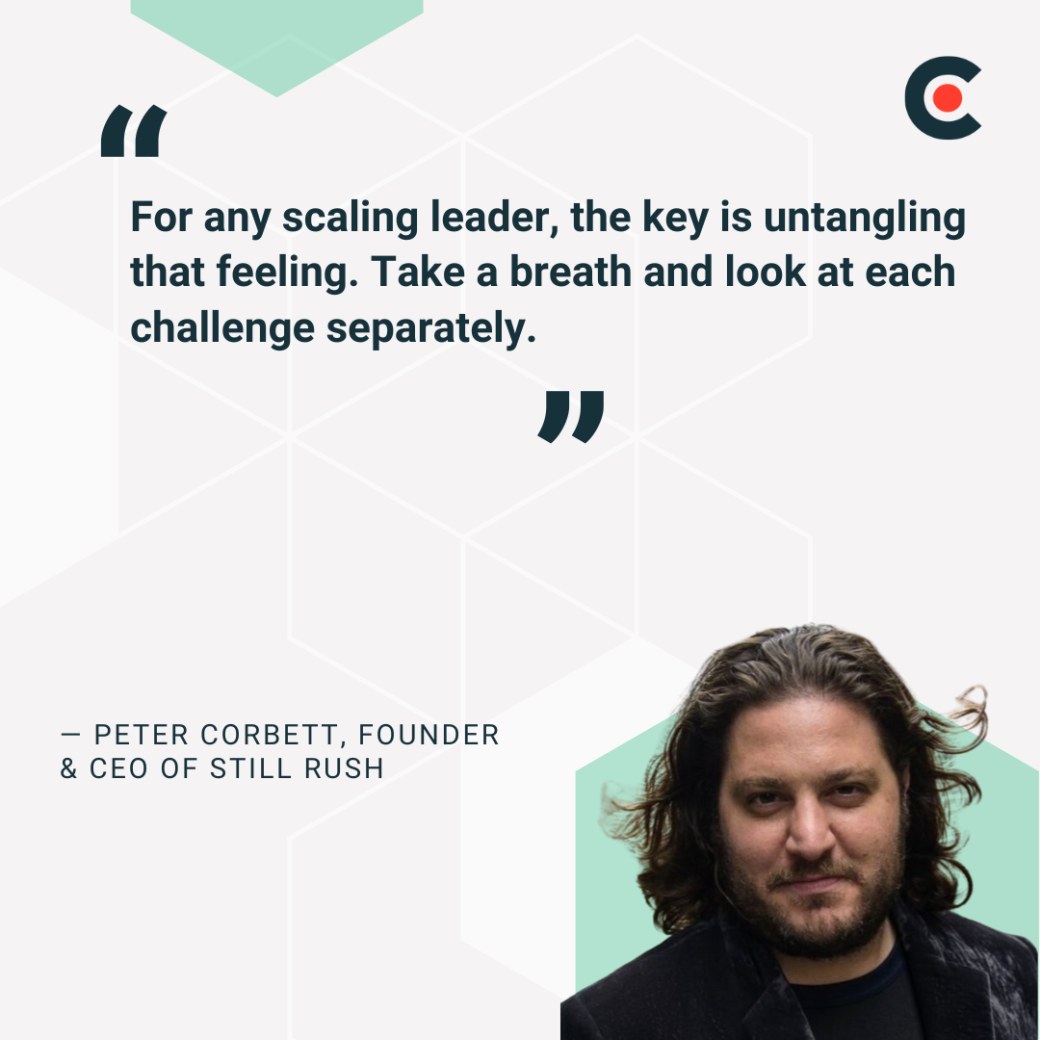

Updated March 13, 2025
CEOs are often laser-focused on growing their businesses, but scaling too rapidly can cause significant headaches. Learn about the biggest fast-growth struggles and explore practical techniques from Peter Corbett, an agency owner turned executive coach, to untangle these issues.
Picture this: Your business has just landed two major clients with lucrative contracts. You’re hiring new employees ahead of launching an exciting new marketing campaign. Even your social media accounts are blowing up with one viral post after another.
If you’ve fantasized about scenarios like these before, you’re not alone.
Looking for a BPO agency?
Compare our list of top BPO companies near you
Every CEO dreams about growing their business and accomplishing their biggest goals. After all, you wouldn’t have started a company if you didn’t have a powerful hunger for success. And if that growth can happen quickly, even better, right?
Of course, achieving fast and sustainable growth isn’t always easy. You must juggle many moving parts from marketing to logistics as you expand your business.
As Peter Corbett, founder and CEO of Still Rush, notes, even the most experienced CEOs can face fast-growth struggles.
Luckily, with careful planning and the right strategies, you can overcome these obstacles and make your ambitions a reality.
CEOs can face a ton of challenges when expanding their businesses. For instance, an e-commerce business might struggle to ramp up production if a product goes viral, while a tech startup might not have the infrastructure to handle a sudden user surge.
While some obstacles are minor speed bumps along your journey, others are more critical. Here are two fast-growth challenges that can make or break your business.

Fast-growing businesses often rely on a handful of major clients. These customers bring substantial projects — and the revenue to pay for them — so it’s natural to focus most of your attention on them. After all, you might have a reason: why spend time finding more clients when you can concentrate on strengthening your existing relationships?
While this strategy might seem sound initially, it can be a huge headache if you suddenly lose one or more of your biggest clients. These losses often occur due to factors outside your control, making them hard to predict.
For example, many advertising agencies have struggled to retain clients after the explosion of generative AI platforms. Similarly, the digital freight broker Next Trucking furloughed most of its employees after losing its two biggest customers, Amazon and Tesla.
Losing major clients can be devastating to your organization’s finances and operations. Your once-predictable cash flow may vanish overnight if you stop earning the expected revenue, leaving you scrambling to pay employees and cover expenses. That’s precisely what happened with Next Trucking, which had to search for last-minute funding to save the company.
Additionally, the loss of major clients can significantly disrupt your workflow. Staff may have nothing to do without their usual projects, causing your productivity to plummet. Your ambitious growth plans may also halt if you no longer have the money to finance them. And even if you try to replace your lost clients, you'll likely deal with increased customer acquisition expenses as you search for new leads quickly.
Being dropped by big clients can cause a snowball effect; here’s a round-up of the challenges it can cause:
Diversifying your client base can help safeguard your business against these nightmarish scenarios. Instead of relying on a handful of all-star clients, aim to partner with a broader range of smaller customers — ideally across several industries. This approach reduces the risk of losing a considerable portion of your revenue stream to disruptions caused by economic downturns or other unexpected shifts.
Developing stronger relationships with existing clients is another way to mitigate potential headaches. Learn about their needs and goals so you can offer personalized service and solutions. Staying on top of deadlines and communication will also help you deliver exceptional customer service.
CEOs often assume that executives and key managers will stay with the business as it grows, but that’s not always the case. Rapid growth can stress your leadership team to the breaking point. Key members might leave if they feel burned out or their vision doesn’t fit the business’s new direction; or they may just want to seek new opportunities elsewhere.
When discussing specific challenges faced by leaders, Peter Corbett presents a scenario “Here's a counterintuitive approach from stoic tradition: visualize losing your biggest client or best talent.”
“Really imagine it— your star executive leaves, your biggest client fires you. What next? This negative visualization might sound odd, but it builds resilience. If you can calmly think through 'We lose everything... So what?' you're prepared. Though if this causes anxiety, you might need guidance with it.”
This turnover might initially seem a mild inconvenience, but it can significantly disrupt your operations. For instance, a departing manager might not share critical information about a project, setting your team back for weeks.
Additionally, losing key leaders can hurt team morale. Your employees might feel anxious about their job security or concerned they won’t mesh with the replacement’s management style.
Obviously, you can’t force anyone to stay with your organization. However, a succession plan can help you ease the pain of executive turnover by allowing you to line up a replacement quickly.
You should also invest in retention strategies to keep your leaders engaged and enthusiastic. This might involve offering flexible work arrangements or professional development opportunities.
As if these two problems weren’t challenging enough, they frequently trigger an avalanche of additional issues. For example, losing a big client could force your business to lay off employees, causing team morale to plummet. Or the departure of a popular manager could leave staff feeling resentful, souring your company culture.
Essentially, growing too fast can present compounding challenges such as:
Corbett recalls invaluable insights from his experience working with key decision-makers and business leaders.
“One client grew from $3 million to $20 million in revenue over three years. When she feels overwhelmed by scaling, she'll list many issues at once. But when we examine each one individually, none are actually that stressful alone - it's bundling everything together that creates overwhelm.”

As the CEO, you could take on the responsibility for these problems. And, as the issues pile up, you might feel burn out or experience decision fatigue — the last thing you need when you’re focused on growing your business.
Monitoring key metrics can help you identify and resolve developing issues before they escalate into a full-blown crisis. If you notice that productivity has declined, you can step in to address the root causes. Open communication will also improve your team’s trust and foster a collaborative company culture.
“For any scaling leader, the key is untangling that feeling. Take a breath and look at each challenge separately.” Corbett highlights the importance of staying grounded and aware when facing challenges. “When I grew to 250 people, I stayed calm by doing this - when things got tough, I'd stop dwelling and just execute. Some might call that bypassing; I call it effective leadership.”
There’s nothing more exciting than watching your business expand, but success often brings new challenges. By identifying and understanding common growing pains for CEOs, you can tackle them more effectively and build positive momentum for your organization.
If you're eager to learn about more challenges you might encounter on your journey to success, follow thought leaders in your industry for additional insights and solutions.

Peter Corbett, agency owner turned executive coach, is currently the Founder and CEO of Still Rush. Peter is the retired/exited founder and CEO of iStrategyLabs, a digital agency that develops solutions to clients’ challenges and brings them to life in the online and offline world. In 2016, Peter sold ISL to WPP and retired from the agency world, and currently serves as an executive coach. Additionally, he is a Venture Partner at Up.Partners.


